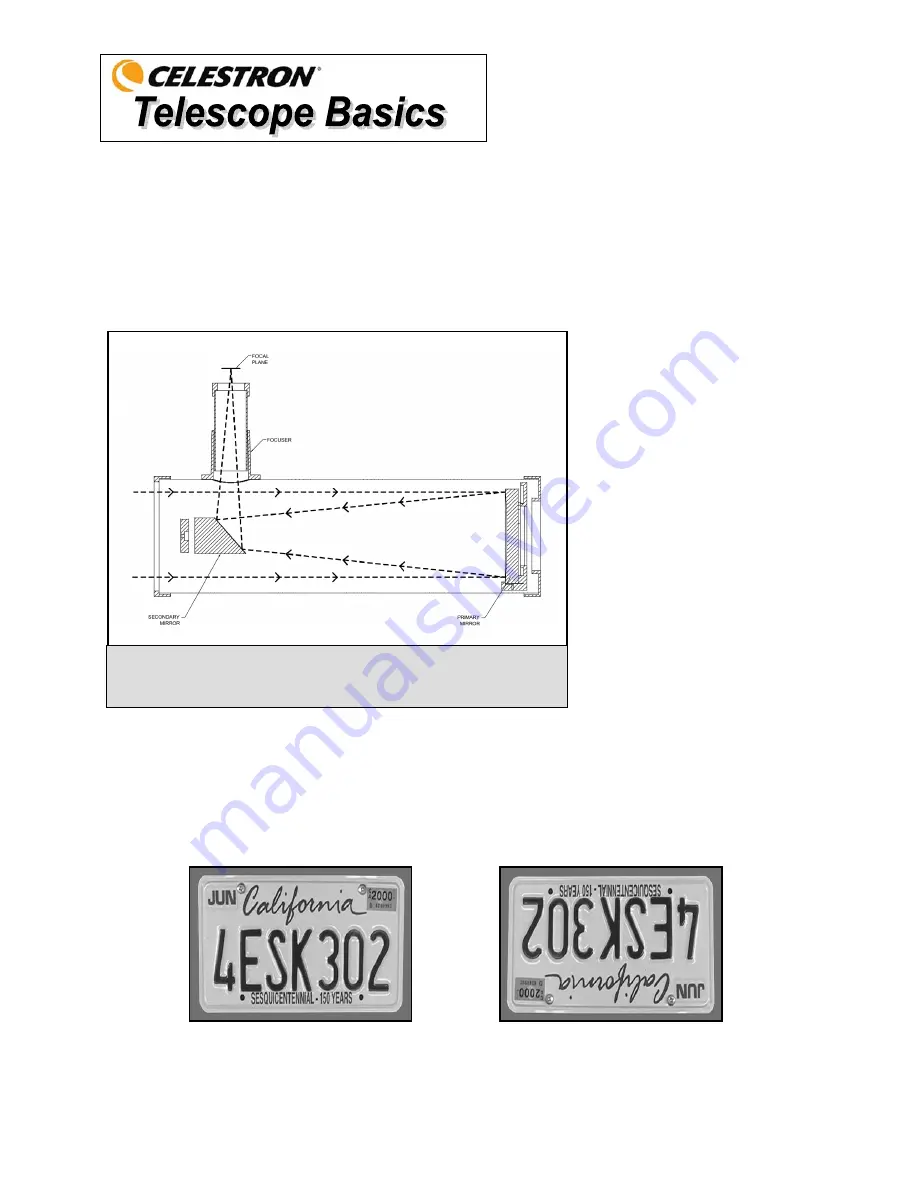
6
A telescope is an instrument that collects and focuses light. The nature of the optical design determines how the
light is focused. Some telescopes, known as refractors, use lenses, and other telescopes, known as reflectors
(Newtonians), use mirrors.
A
Newtonian
reflector uses a single concave mirror as its primary. Light enters the tube traveling to the mirror at
the back end. There light is bent forward in the tube to a single point, its focal point. Since putting your head in
front of the telescope to look at the image with an eyepiece would keep the reflector from working, a flat
(secondary) mirror called a
diagonal
intercepts the light and points it out the side of the tube at right angles to the
tube. The eyepiece is placed there for easy viewing.
Newtonian Reflector telescopes
replace heavy lenses with mirrors to
collect and focus the light, providing
much more light-gathering power for
the money spent. Because the light
path is intercepted and reflected out
to the side, you can have focal
lengths up to 1000mm and still enjoy
a telescope that is relatively compact
and portable. A Newtonian Reflector
telescope offers such impressive
light-gathering characteristics you
can take a serious interest in deep
space astronomy even on a modest
budget. Newtonian Reflector
telescopes do require more care and
maintenance because the primary
mirror is exposed to air and dust.
However, this small drawback does
not hamper this type of telescope’s
popularity with those who want an
economical telescope that can still
resolve faint, distant objects.
I
I
m
m
a
a
g
g
e
e
O
O
r
r
i
i
e
e
n
n
t
t
a
a
t
t
i
i
o
o
n
n
Newtonian reflectors normally produce an inverted image (upside down and backward) – with the FirstScope when
viewing from the rear looking into the eyepiece. If viewing from either side, when looking into the eyepiece, the
image will appear rotated at an angle. If you view from the front (looking into the eyepiece) and slightly to either
side so as not to block the optical path, the image will be correct which is very useful for looking at terrestrial views.
Figure 3-2a
FirstScope when viewing from the
front of the tube.
Figure 3-2b
FirstScope when viewing from the rear
of the tube.
Figure 3-1
Cutaway view of the light path of the Newtonian optical design.





























